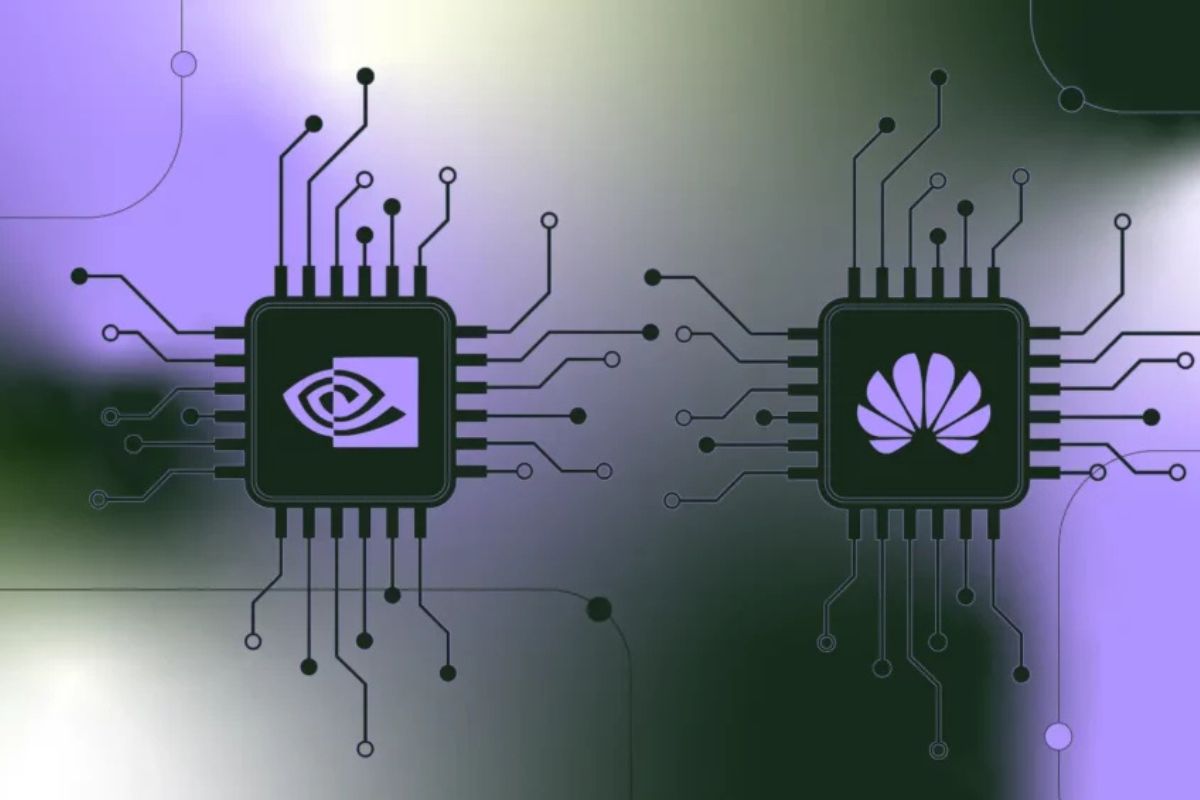AI’s Software Heart: CANN Versus CUDA
Most folks outside the tech world haven’t heard the names “CANN” or even “CUDA.” Yet, these tools quietly power your favorite chatbots, recommend the next viral meme, and crunch data in the world’s brightest research labs. And if I’m honest, the stakes? Couldn’t be higher.
Last week, Huawei pulled off a move that, if it works, might shake up the multi-billion-dollar AI industry: the company has open-sourced its CANN (Compute Architecture for Neural Networks) software toolkit. Now, at first glance, that might not sound like a mic-drop moment. But buried in that announcement is a story about international rivalry, developer freedom, and the never-ending chase for technical superiority.
What Exactly Is CANN? (And Why’s It Getting So Much Hype?)
Picture CANN as the command center for Huawei’s Ascend AI chips. Developed since 2018 as an answer to NVIDIA’s CUDA, CANN offers advanced tools to developers, helping them build, train, and deploy artificial intelligence models tailored to run on Ascend hardware. The toolkit includes a range of high- and low-level programming interfaces, optimized libraries, and utilities, basically, the “secret sauce” that turns hardware into a powerhouse for deep learning and neural networks.
Why does this matter? Well, for years, NVIDIA’s CUDA has been the kingpin in the AI software world. You wanted to run your neural network quickly? CUDA. Need to squeeze more speed out of your models? CUDA. It’s been the gold standard, a moat around NVIDIA’s hardware empire.
But with CANN going open-source, the game has changed. Suddenly, anyone anywhere, whether you’re a researcher in Paris, a startup in Bangalore, or a grad student in Beijing, can peek under the hood, suggest improvements, or even port CANN to new systems. It’s a bold step. Maybe even a necessary one.
Why Now? Timing the Move Amid Rising Global Tensions
You’ve probably noticed the headlines. US-China relations? Still frosty. Export bans, regulatory probes, and new legislation are cropping up like weeds after the rain. Huawei, a lightning rod for this tension, has felt the heat, from blocked chip sales to accusations of security risks.
Against this backdrop, Huawei’s rotating chairman, Eric Xu Zhijun, stood up in Beijing at the recent developer conference and laid it all out: open-sourcing CANN, he claimed, would “speed up innovation” and “make Ascend easier to use.” The timing, he insisted, wasn’t about politics, but it’s hard not to see a message here.
Especially as the move followed closely on the heels of China’s own Cyberspace Administration launching an inquiry into NVIDIA over “serious security issues” tied to their processors… and after US lawmakers demanded that NVIDIA equip its chips with new tracking features for security.
The upshot? Huawei’s not just competing in the market. It’s fighting, on home turf and abroad, for tech independence and relevance.
CUDA: The Fort Knox of AI Software Development
Step back for a second. Before CANN ever surfaced, NVIDIA’s CUDA was already the undisputed champion of AI development platforms. Why? Because it offered unmatched optimization for NVIDIA hardware.
Here’s the kicker: CUDA is a closed fortress. Try running CUDA code on rival GPUs, and you’ll hit a brick wall. The platform’s licensing terms explicitly block using “translation layers” to make CUDA work on third-party hardware. (Developers who’ve tried know the sting. Their code simply doesn’t translate.)
This lock-in strategy has turned CUDA into a kind of “walled garden”, great for consistent performance, but lousy for those hoping to break away from NVIDIA. Most Chinese (and, frankly, global) AI startups and labs buy NVIDIA GPUs precisely because of CUDA’s dominance. After years of development, no challenger has managed to offer a full-featured, fast alternative.
So, How Does CANN Stack Up? Challenges and Opportunities
If you’re thinking, “All right, so Huawei has its own tool. How’s that supposed to matter?”, fair enough. The reality: it’s a herculean task getting anyone to switch.
Here’s why changing platforms is tough:
- Massive inertia. Nearly two decades of libraries, scripts, and models built for CUDA.
- Documentation and training. CUDA’s support resources are deep, with thousands of tutorials, guides, and Q&A threads.
- Ecosystem advantages. From university curricula to open-source AI projects, CUDA is the default.
- Performance skepticism. Rumors swirl of Huawei’s Ascend chips outpacing NVIDIA’s latest under certain workloads (DeepSeek R1, CloudMatrix 384), but the consensus is: it’ll be a while before Ascend + CANN are as proven as NVIDIA’s offerings.
Still, there’s hope on the horizon. CANN’s open-source status means developers, universities, and tech companies can tinker, customize, and (maybe) accelerate its evolution. Chinese media reports that Huawei is already inviting AI leaders, research institutes, and industry partners to join a new, open Ascend development alliance, a classic “strength in numbers” play.
Industry Voices: Mixed, Cautious… but Watching Closely
Tech analysts are split. Some say open-sourcing gives Huawei a fighting chance to catch up (eventually) with CUDA’s polish. Others warn it could take years before CANN’s libraries rival CUDA for scale and reliability, especially as ever-larger AI models push hardware to the limits.
One thing’s certain: success depends not just on “raw” chip performance, but on a rich web of real-world software support:
- Will CANN run the hottest frameworks for generative AI and large language models?
- Can it offer the same end-to-end experience for deploying, debugging, and optimizing new applications?
- Will it keep up with the relentless pace of AI R&D, or get left behind as CUDA races ahead?
Funny thing about open-source, though: if the community buys in, devs, researchers, and companies, it can evolve faster than any single corporate entity. Time will tell.
China’s Broader Tech Independence Drive
Step outside the AI bubble for a second. There’s a pattern: China’s technology industry is strategic, and lately, it’s converging on self-reliance.
Here’s how that’s playing out:
- Open-source everywhere: Xiaomi opened up its MiDashengLM-7B language model, Alibaba released the Qwen3-Coder AI tool, and now Huawei’s tossing CANN into the public domain.
- Regulatory walls: Ongoing US export rules target not just chips, but software, cloud platforms, and intellectual property.
- Innovation ecosystem: Universities, government research, and industry consortia working together to nurture alternatives to Western tech.
In that light, CANN’s unveiling is about more than market share. It’s about future-proofing the world’s second-largest economy against global uncertainty, and, maybe, leapfrogging competitors.
The Developer’s Dilemma: To Switch or Not to Switch?
For many software engineers and AI developers, the tool is just a means to an end. The real goal? Results. Speed. Reliability. Tools must work flawlessly, save time, and, crucially, fit neatly into collaborative workflows.
Here’s where things get tricky for Huawei:
- Quality of documentation: If it’s not world-class, new users will drift back to CUDA.
- Community engagement: Vibrant forums, bug fix cycles, and consistent updates are vital.
- Integration with “upstream” libraries: TensorFlow, PyTorch, and other AI stacks need seamless compatibility.
- Performance and stability under load: Academic benchmarks are great… but production code breaks easily.
Ask a CTO deciding whether to roll out CANN-based pipelines: “Will it be worth the pain of switching? And how long until our ROI matches (or exceeds) what we get from NVIDIA + CUDA?”
If, or when, Huawei cracks that nut, you’ll see real momentum.
Global Industry Impacts: The New Rules of the AI Chip Wars
Zoom out far enough, and the tech industry’s shape starts to shift. For years, AI computing ran on closed software and proprietary chips, NVIDIA, Intel, and AMD, with little room for upstarts.
But now?
- Collaborative over proprietary: More companies are betting on open standards, open-source code, and consortium-led innovation.
- Regulation as a driving force: Governments using scrutiny and sanctions to shape global supply chains, sometimes in unpredictable ways.
- Regional ecosystems rise: As whole countries seek resilience, we’re seeing more regional clusters for R&D, chip foundries, and developer alliances.
- Talent migration: Coders, engineers, and researchers increasingly build where they’re free to experiment, leading to new hotbeds of innovation.
Believe it or not, it’s not even just about chips or code. It’s a three-dimensional chess match, with moves and countermoves happening in patent filings, legislative halls, supply chains, and university labs.
The View from the Top: Can Huawei’s Open-Source Gamble Work?
Will CANN dethrone CUDA? No one knows, not even the most optimistic Huawei engineer or the most bullish industry analyst.
Here’s what we do know:
- The move is a clear signal: China intends not just to catch up, but perhaps to set new benchmarks in AI computing, on its own terms.
- For developers and scientists around the world, having a viable alternative to CUDA, if CANN succeeds, means more choice, more flexibility, and, ultimately, faster innovation.
- The long-term impacts of open-sourcing hardware drivers, AI toolkits, and high-performance frameworks are impossible to predict. Some open projects soar. Others fizzle out, starved of developer attention.
But, here’s the kicker. By creating a bridge (however shaky at first) across the great digital divide, Huawei has opened the door to a new era. The company’s bet, essentially, is this: the future of AI will not belong to any single company, but to a community.
Key Takeaways: What To Watch Next
- Performance benchmarks: Will real-world tests show CANN can keep up (or even leapfrog) CUDA for the toughest, largest AI workloads?
- Community growth: Does the developer ecosystem around CANN blossom, bringing in thought leaders, students, and innovative startups?
- Uptake in research: Do major AI conferences and papers start citing work built on top of CANN?
- International partnerships: Does CANN become the “go-to” for emerging markets and countries wary of monopoly control?
- Policy and regulatory drama: How will governments, especially in the US and EU, react as CANN spreads?
Frequently Asked Questions
What is CANN?
CANN stands for Compute Architecture for Neural Networks, Huawei’s open-source toolkit for developing AI applications on its Ascend chips.
How does it differ from CUDA?
CUDA, developed by NVIDIA, is closed-source and optimized for NVIDIA’s GPUs, creating a single-vendor ecosystem. CANN, now open source, is designed for Huawei’s chips and aims to build an open, collaborative developer community.
Will switching from CUDA to CANN be easy for developers?
Not overnight. CUDA’s ecosystem is rich with tools, libraries, and support. CANN has catching up to do, especially in developer adoption, documentation, and compatibility with popular AI frameworks.
Why is this move significant?
It signals a potential shift in the global AI computing landscape, weakening the dominance of proprietary ecosystems and accelerating efforts towards hardware and software independence, especially in the context of US-China tech rivalry.
What’s the bottom line?
The AI world thrives on innovation, speed, and, increasingly, openness. Whether CANN will rewrite the rules or simply inject more choice is an open question. But the battle lines are drawn, and the competition is heating up.








